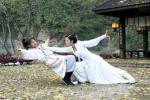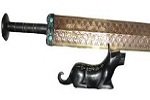Sun Tzu's Art of War: Attack by Stratagem
Home ![]() Famous People From Ancient China
Famous People From Ancient China ![]() Sun Tzu
Sun Tzu ![]() Art of War Sun Tzu
Art of War Sun Tzu
 The Art of War by Sun Tzu: Attack by Stratagem text in Symlified Chinese, Part 1
The Art of War by Sun Tzu: Attack by Stratagem text in Symlified Chinese, Part 1
The Art of War is the oldest military treatise in the world. It was writen by Sun Tzu ( also known as Sun Zi or Sun Wu) and has been translated into many languages.
Chapter Three: Attack by Stratagem
1. Sun Tzu said: In the practical art of war, the best thing of all is to take the enemy's country whole and intact; to shatter and destroy it is not so good. So, too, it is better to recapture an army entire than to destroy it, to capture a regiment, a detachment or a company entire than to destroy them.
2. Hence to fight and conquer in all your battles is not supreme excellence; supreme excellence consists in breaking the enemy's resistance without fighting.
3. Thus the highest form of generalship is to balk the enemy's plans; the next best is to prevent the junction of the enemy's forces; the next in order is to attack the enemy's army in the field; and the worst policy of all is to besiege walled cities.
4. The rule is, not to besiege walled cities if it can possibly be avoided. The preparation of mantlets, movable shelters, and various implements of war, will take up three whole months; and the piling up of mounds over against the walls will take three months more.
5. The general, unable to control his irritation, will launch his men to the assault like swarming ants, with the result that one-third of his men are slain, while the town still remains untaken. Such are the disastrous effects of a siege.
6. Therefore the skillful leader subdues the enemy's troops without any fighting; he captures their cities without laying siege to them; he overthrows their kingdom without lengthy operations in the field.
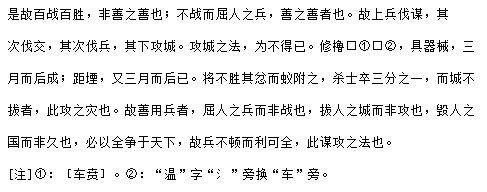 The Art of War by Sun Tzu: Attack by Stratagem text in Symlified Chinese, Part 2
The Art of War by Sun Tzu: Attack by Stratagem text in Symlified Chinese, Part 2
7. With his forces intact he will dispute the mastery of the Empire, and thus, without losing a man, his triumph will be complete. This is the method of attacking by stratagem.
8. It is the rule in war, if our forces are ten to the enemy's one, to surround him; if five to one, to attack him; if twice as numerous, to divide our army into two.
9. If equally matched, we can offer battle; if slightly inferior in numbers, we can avoid the enemy; if quite unequal in every way, we can flee from him.
10. Hence, though an obstinate fight may be made by a small force, in the end it must be captured by the larger force.
11. Now the general is the bulwark of the State; if the bulwark is complete at all points; the State will be strong; if the bulwark is defective, the State will be weak.
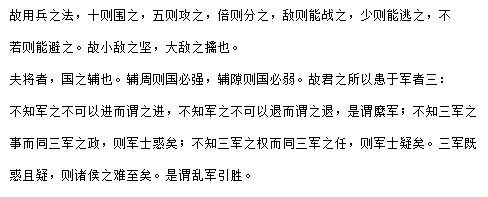 The Art of War by Sun Tzu: Attack by Stratagem in Symlified Chinese, Part 3
The Art of War by Sun Tzu: Attack by Stratagem in Symlified Chinese, Part 3
12. There are three ways in which a ruler can bring misfortune upon his army:--
13. (1) By commanding the army to advance or to retreat, being ignorant of the fact that it cannot obey. This is called hobbling the army.
14. (2) By attempting to govern an army in the same way as he administers a kingdom, being ignorant of the conditions which obtain in an army. This causes restlessness in the soldier's minds.
15. (3) By employing the officers of his army without discrimination, through ignorance of the military principle of adaptation to circumstances. This shakes the confidence of the soldiers.
16. But when the army is restless and distrustful, trouble is sure to come from the other feudal princes. This is simply bringing anarchy into the army, and flinging victory away.
17. Thus we may know that there are five essentials for victory: (1) He will win who knows when to fight and when not to fight. (2) He will win who knows how to handle both superior and inferior forces. (3) He will win whose army is animated by the same spirit throughout all its ranks. (4) He will win who, prepared himself, waits to take the enemy unprepared. (5) He will win who has military capacity and is not interfered with by the sovereign.
 The Art of War by Sun Tzu: Attack by Stratagem text in Symlified Chinese, Part 4
The Art of War by Sun Tzu: Attack by Stratagem text in Symlified Chinese, Part 4
18. Hence the saying: If you know the enemy and know yourself, you need not fear the result of a hundred battles. If you know yourself but not the enemy, for every victory gained you will also suffer a defeat. If you know neither the enemy nor yourself, you will succumb in every battle.
Other Chapters of the Art of War by Sun Tzu:
- Laying Plans
- Waging War
- Attack by Stratagem
- Tactical Dipositions
- Energy
- Weak Points and Strong
- Maneuvering
- Variation in Tactics
- The Army on the March
- Terrain
- The Nine Situations
- The Attack by Fire
- The Use of Spies
* The version was translated by Lionel Giles in 1910.
Related Readings:
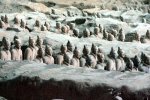
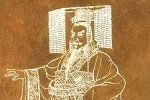
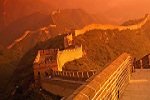
Home ![]() Famous People From Ancient China
Famous People From Ancient China ![]() Sun Tzu
Sun Tzu ![]() Military Art: Laying Plans
Military Art: Laying Plans

New York Pass With More than 50 Sttractions

Southern California CityPASS saves you 32% for Disneyland, Universal Studios and 3 other attractions

